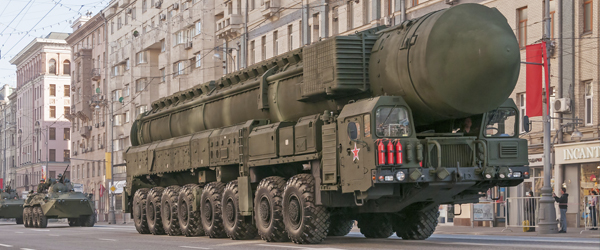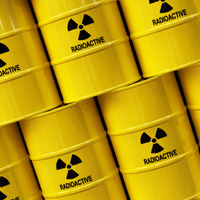Since the mid-1980s, MacArthur has supported academics and experts who conduct rigorous independent research on complex nuclear issues. They distill their findings into recommendations for policymakers, aiming to make the world safer from existential nuclear threats. Public awareness about nuclear threats, meanwhile, has waxed and waned since the Cold War. We have remained committed to the cause because dangers persist. Over 15,000 nuclear weapons still exist, along with enough weapons-usable material to build tens of thousands more. The United States, Russia, and China seek to modernize their nuclear arsenals. Terrorism adds a new challenge, and the once invaluable cooperation between the United States and Russia on nuclear risk reduction has fallen victim to broader geopolitical tensions.
President Obama brought attention to the issue, outlining an ambitious nuclear agenda in his 2009 Prague speech. As the first sitting U.S. President to visit Hiroshima, he has sought to make this a legacy issue. In this election year, nuclear issues have particularly risen to the fore. Debates have centered on the ultimate power of the president, who goes from being a candidate to having access to nuclear codes overnight. We are now asking ourselves whether there is a greater role for the public to affect nuclear policy.

Policy change is always difficult to predict. But the role of outside experts in improving nuclear policy is well established, and grantmaking foundations have supported them since the beginning of the nuclear age. After the Cold War, funding helped experts seed the intellectual origins of the Cooperative Threat Reduction programs that tangibly reduced nuclear dangers. Foundations also supported efforts related to the New START Treaty in 2011, which maintained a U.S.-Russian verification regime, and the Iran deal, which produced the most comprehensive and intrusive arms control measures ever.
Now might be a good time to try to stimulate public debate. Capitalizing on this renewed attention to nuclear issues and involving the broader public could help unravel this existential threat we created for ourselves.
When it comes to the public, however, input into policymaking is limited, to say the least. Compare this to another key issue of our day—climate change. The climate change threat is certainly existential, but it is relatively slow moving. In contrast, the nuclear threat could become a world-altering disaster within minutes. But, in terms of public awareness, people around the world are more engaged in climate change.
A recent study by the Frameworks Institute sheds some light on why nuclear threats are not currently a salient social issue. They identify two particularly relevant “cultural models”: an unthinkable model in which the consequences are so unthinkable that people psychologically distance themselves from the threat and hope for the best; and the bread and butter model in which people prefer to spend their energy on “everyday” issues where there are clear steps and their involvement is more likely to affect outcomes: nuclear issues seem "too big and specialized for ordinary people to affect."
The study reinforces a specific challenge in engaging the public—to be effective, you need to provide something for people to do. The issue gets attention—nuclear threats are terrifying. But what do we ask people to do once we have their attention? How do we prevent them from tuning out because the issue seems overwhelming, abdicating responsibility to others?
If we do find actions for the public to take, there is some reason for encouragement. MacArthur staff have noticed that newcomers to the topic tend to respond with significant concern and a desire to affect change. Many are shocked to learn how many weapons still exist and how many near-misses the United States has experienced with its arsenal. They are shocked when told that just a handful of officials in the Pentagon are responsible for determining nuclear force structure; there is little sustained civilian oversight of nuclear planning; and even the president has little scrutiny over these plans. While certainly anecdotal, this public interest gives us reason to believe raising awareness could be successful in building a constituency to support stronger nuclear policies.
Greater public debate , involving a variety of voices and perspectives, would be a start on decisions being taken in their name: What is the role of nuclear weapons in contemporary society? Are the dangers worth the risks? What size arsenal is necessary for national security? What trade-offs are citizens willing to make? Should the United States spend more than $1 trillion over the next three decades on modernizing its nuclear arsenal, or could part of it be spent elsewhere?
Now might be a good time to try to stimulate public debate. Capitalizing on this renewed attention to nuclear issues and involving the broader public could help unravel this existential threat we created for ourselves.
As we consider our future investments in this area, we will monitor public awareness, concern, and demand for action; the actions of countries and the strength of political will to reduce nuclear risk; policymakers’ receptivity to, and adoption of, expert advice; and more.



